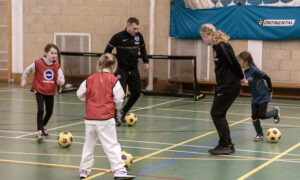By Jamie Whiteside | Assistant Head
If you went to school at a time where technology in a lesson involved the use of an overhead projector, or a BBC micro computer, you’ll probably find the news that we are introducing sets of virtual reality (VR) headsets into our classrooms fairly bizarre. Furthermore, if you’re a natural sceptic like me, you may also think that VR sounds like a gimmick, useful only until the novelty factor wears off and then surely bound for the departmental office or IT cupboard.
Indeed, education has a long and rich history of hype around the latest technology that will “transform teaching”. Interactive whiteboards, virtual learning environments, and magnifying visualisers (think of a live video camera on the end of a bendy tripod) are just a few of the pieces of technology that have been touted as game-changing when it comes to the quality of teaching and learning. I’ve seen hundreds of presentations, brochures and conference demos of transformative technology that will revolutionise lessons and that we “must purchase immediately” or be behind the times.
However, the truth of all genuinely successful use of IT in education is actually that the presence of kit alone is never sufficient to guarantee a good lesson. You can’t buy your way to pedagogical excellence, nor replace a teacher with a robot (just yet!). That’s not to say that the right hardware and software isn’t worth the money. The best teachers use technology as part of an expanding tool kit, deploying the most appropriate device at just the right time in a lesson, or series of lessons, when they sense it will work best.
We’ve just taken delivery of a box of headsets loaded with Google Expeditions that I hope will fit neatly into this model. Expeditions has over 500 simulations that can be explored by a class including swimming with sharks, visiting outer space, walking through a museum or looking at the aurora borealis. It’s undoubtedly fun taking part in an expedition (the audible ‘oohs’ and ‘aahs’ in the staff training session proved this), but the principle is based on something more substantial. We know that experiential learning sticks far longer than cramming for a test. VR is an opportunity to scale that kind of learning. We also know that with smartphones in our pockets, knowledge retention is an outdated model that is irrelevant in the modern workplace. VR allows us to build more ‘learning by doing’ into our classrooms, it adds a depth that was difficult to obtain without a lot of extra work, and enhances already good teaching by adding something extra.
“Give pupils something to do, not something to learn;” – John Dewey is just one of many excellent quotes in the (http://bit.ly/2iKu4zV) video that explains the philosophy behind the team that has created Google expeditions. If you are interested in learning more about VR in education, I’d highly recommend it.


